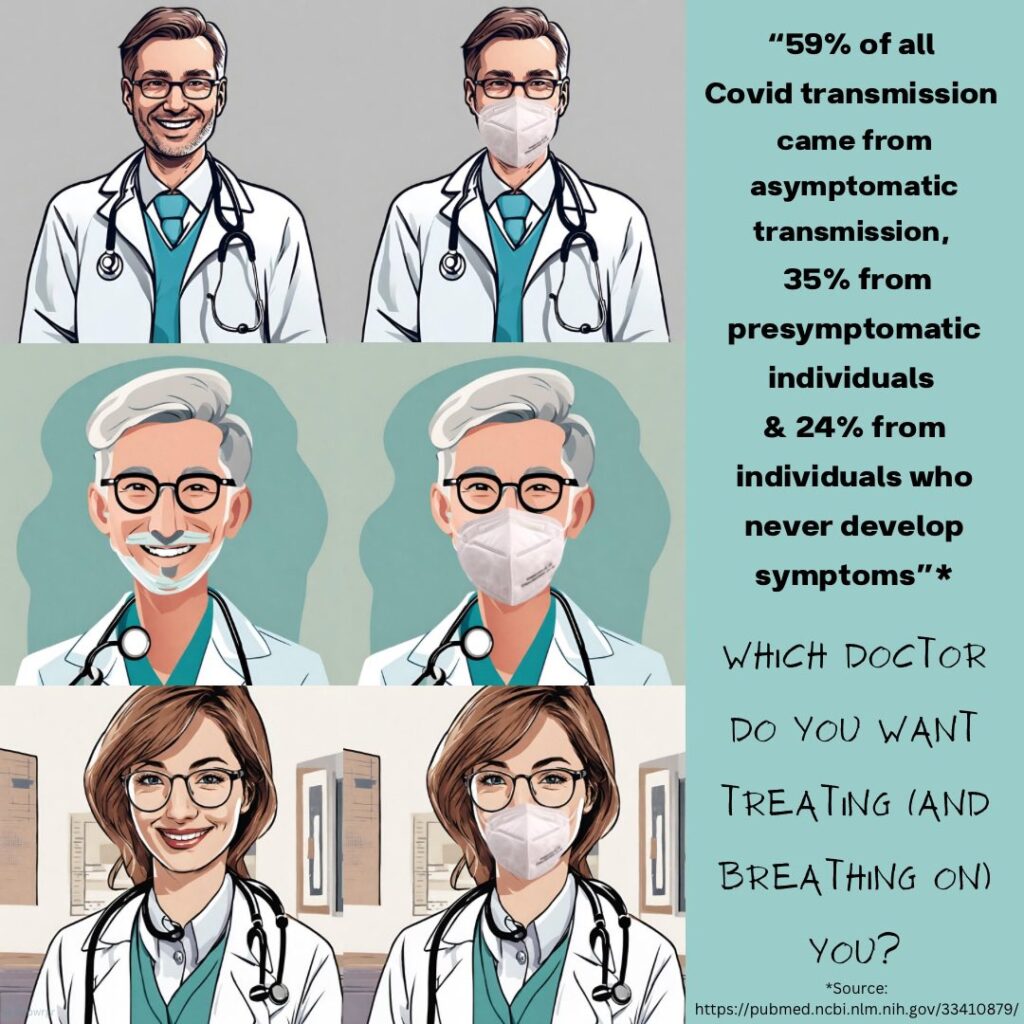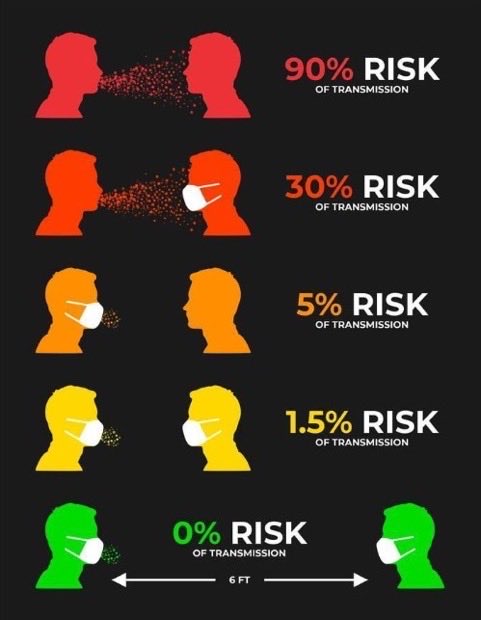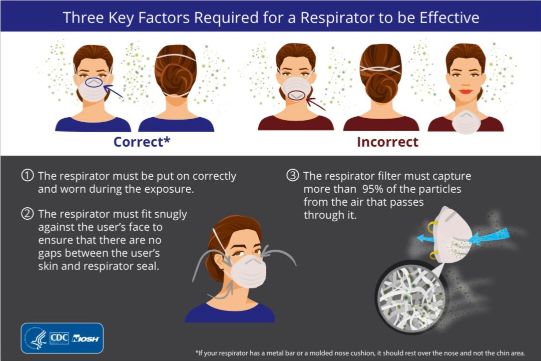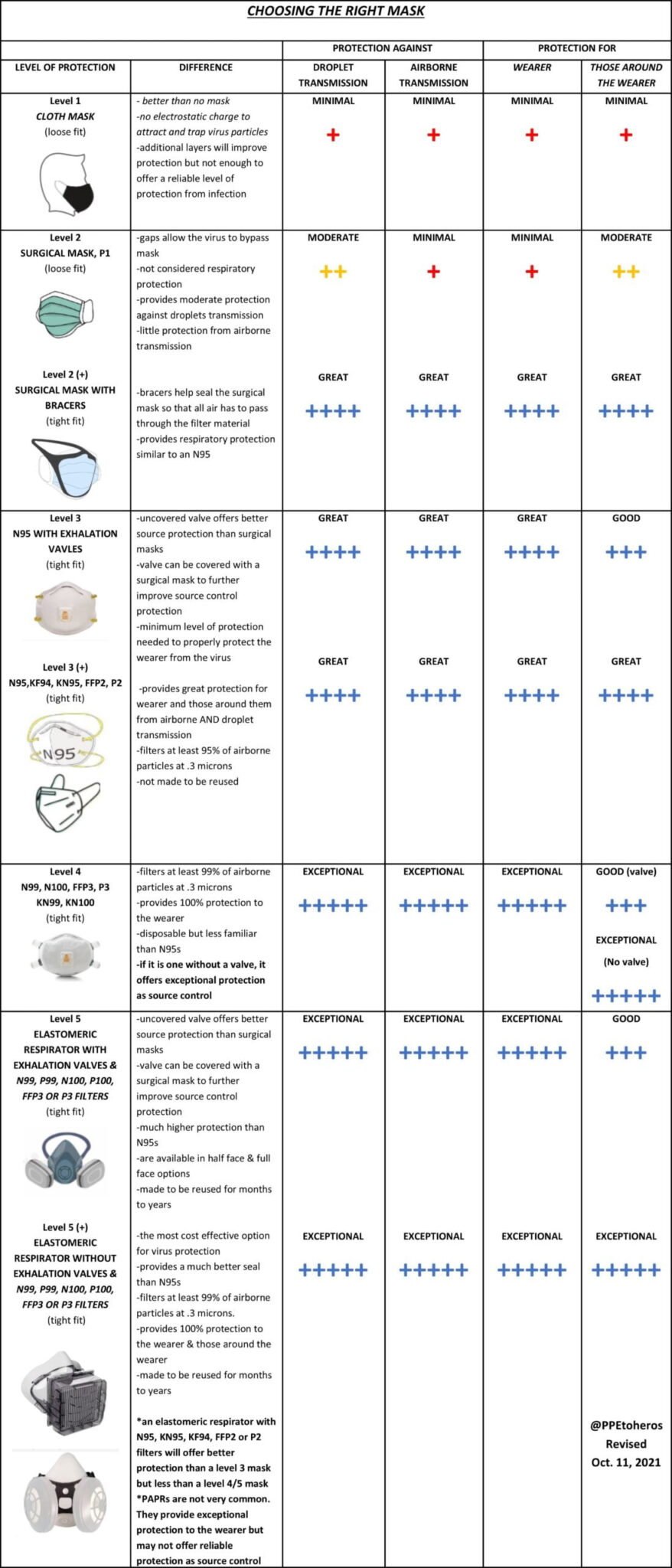Respirators/Masks/Goggles

Eye Safety – Eye Protection for Infection Control
The Centers for Disease Control and Prevention (CDC) recommends eye protection for a variety of potential exposure settings where workers may be at risk of acquiring infectious diseases via ocular exposure. This document provides background information and specific details on eye protection that can be used to supplement eye protection recommendations provided in current CDC infection control guidance documents. It is intended to familiarize workers with the various types of eye protection available, their characteristics, and their applicable use. Workers should understand that regular prescription eyeglasses and contact lenses are not considered eye protection.
Infectious diseases can be transmitted through various mechanisms, among which are infections that can be introduced through the mucous membranes of the eye (conjunctiva). These include viruses and bacteria than can cause conjunctivitis (e.g., adenovirus, herpes simplex, Staphylococcus aureus) and viruses that can cause systemic infections, including bloodborne viruses (e.g. hepatitis B and C viruses, human immunodeficiency virus), herpes viruses, and rhinoviruses. Infectious agents are introduced to the eye either directly (e.g., blood splashes, respiratory droplets generated during coughing or suctioning) or from touching the eyes with contaminated fingers or other objects.
Eye protection provides a barrier to infectious materials entering the eye and is often used in conjunction with other personal protective equipment (PPE) such as gloves, gowns, masks or respirators.


AMA podcast: "Six things doctors wish patients knew about wearing masks."

Respirator User Guide: N95 3M Aura 9205 - Donning
This video demonstrates the correct sequence for donning a 3M Aura 9205 N95 respirator. Knowing the correct order for Donning (putting on) your N95 Disposable Filtering Facepiece Respirator is vital in the fight to stop the spread of infectious diseases transmitted via the airborne route.

3M Respirator Testing: FAQ's
In the U.S., fit testing is a required component of any Occupational Safety and Health Administration (OSHA) written respiratory protection program in which workers are required to wear tight-fitting respirators. Qualitative fit testing is an acceptable method in many cases.
This document contains answers to many of the fit-testing questions we receive the most often.
Choosing the Right Mask
Credit: Nicolas Smit
@PPEtoheros

